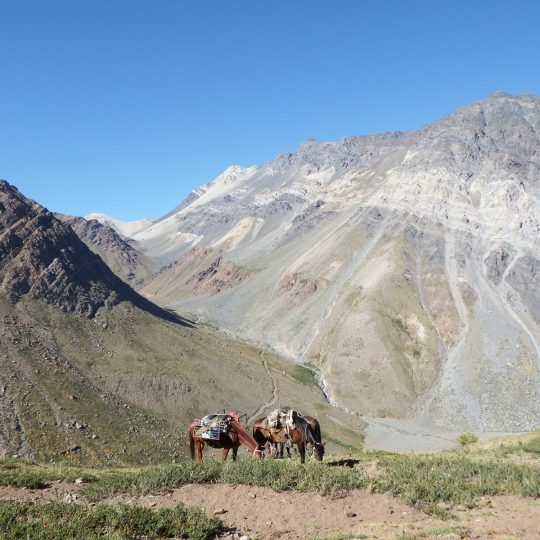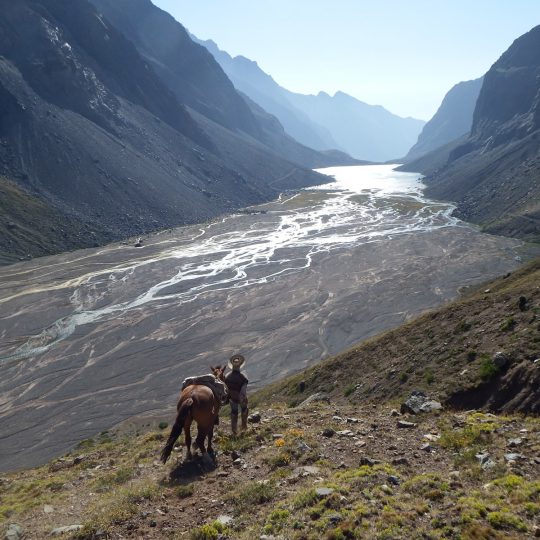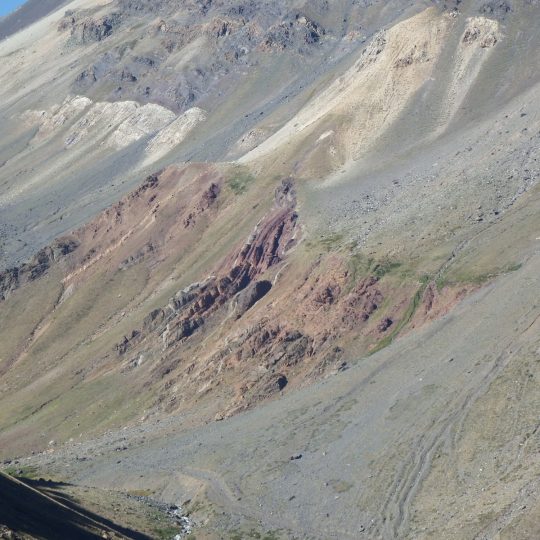Post Symposium Geological Field Trip – July 7, 2022
ONE-DAY CROSS-SECTION TO THE ANDES EAST OF SANTIAGO
The objective of this 1-day field-trip to the Principal Cordillera (the eastern morphostructural Andean unit in Chile, at 33°30’S) is to introduce the participants in the tectonic and paleogeographic evolution of this region. Late Eocene to early Miocene, mainly volcanic and volcaniclastic continental deposits of the Abanico Formation form in central Chile the bulk of the Principal Cordillera, west of the regional El Diablo fault. Back-arc Jurassic to Early Cretaceous marine, continental and evaporitic deposits exposed east of the fault form the eastern portion of the Principal Cordillera in Chile and further east in Argentinean territory. The El Diablo fault represents the eastern master fault of the extensional Abanico basin that hosted the Abanico formation. This fault, which was inverted in early Miocene, triggered apparently the development of the east-vergent thin-skinned fold-thrust belt that affects the Mesozoic deposits that cover the Oxfordian evaporitic level, and caused a west-vergent back-thrust system in the Cenozoic deposits west of the fault.
Please note that this is an optional activity and is subject to sanitary and meteorological conditions and is not included in the registration fee. More information on logistics and costs will be available soon.
Guided tour to the Department of Laboratories, Servicio Nacional de Geología y Minería, SERNAGEOMIN – July 8, 2022
The objective of this visit is to show participants the laboratories belonging to the Isotope Geology area of SERNAGEOMIN. The tour will begin with an introductory presentation of the history of the department and its facilities, and will continue with a visit to each of the following laboratories:
- Geochronology: Ar/Ar Dating (mass spectrometer MAP and ARGUS) and U-Pb dating laboratories.
- SEM: CL images, chemical microanalysis EDS and SE/BSE images.
- Stable isotopes: analysis of carbonates and water samples.
Two visits will be programmed, one in the morning and one in the afternoon (with a maximum of 15 participants per visit).







